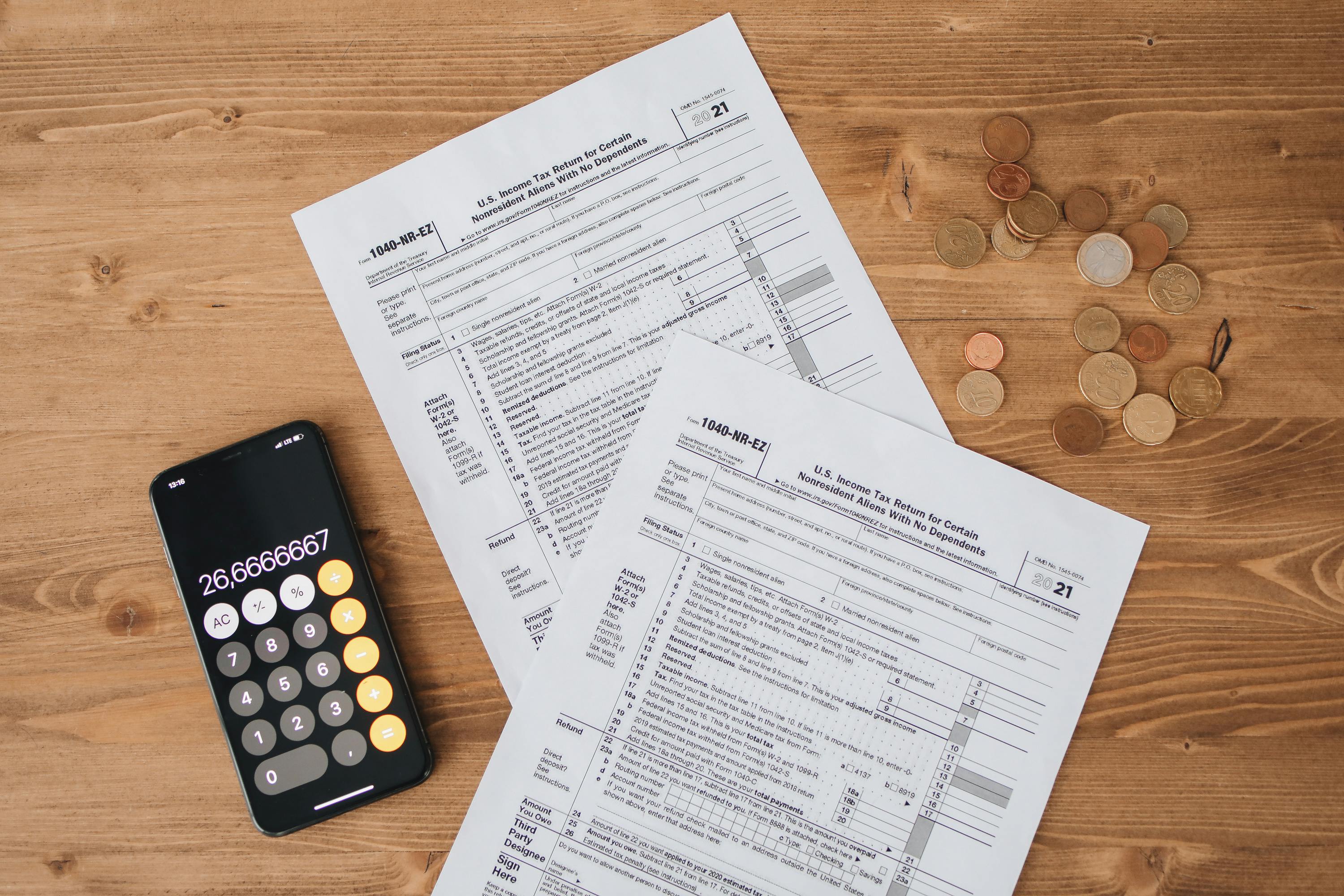Products
Trading Strategies
Markets
Ask AI About MIRA

No Data Yet

The Event in Detail US Senate Finance Committee to Examine Digital Asset Taxation The U.S. Senate Finance Committee is scheduled to hold a hearing titled "Examining the Taxation of Digital Assets" on October 1 at 10:00 AM ET. Key witnesses will include Lawrence Zlatkin, Vice President of Tax at Coinbase Global, Inc., and Jason Somensatto, Director of Policy at Coin Center. This session aims to clarify existing tax laws and evaluate the necessity of new legislation for digital assets, building on recommendations from the White House Digital Asset Working Group. Discussions may include proposals for a de minimis exemption for transactions under $300 and reduced tax rates on Bitcoin payments. Hyperliquid Launches Native Stablecoin USDH On September 24, Hyperliquid, a significant decentralized exchange, officially launched USDH, its native stablecoin. Issued by Native Markets following a competitive bid, USDH is backed by cash and short-term U.S. Treasury bonds. In the 24 hours preceding its launch, over $15 million worth of USDH was pre-minted, with initial trading volumes exceeding $2 million. The USDH/USDC pair maintained its peg at 1.001 in early sessions. Hyperliquid's decision to launch USDH is a strategic response to its substantial reliance on external stablecoins, particularly Circle's USDC, which accounts for approximately $6 billion of its deposits, representing 7.5% of all USDC in circulation. This move aims to internalize revenue from reserves and mitigate risks associated with external, centralized assets. Native Markets secured the issuance rights despite offering a 50% revenue share compared to competitors' offers of 95-100%. GAIN Token Experiences Significant Price Decline Post-Listing The GAIN token, associated with Griffin AI, saw a price crash of over 90% shortly after its listing on Binance Alpha and other major exchanges on September 24. On-chain data indicated a substantial issuance of 5 billion tokens. The token was launched on the BNB Chain with promises of utility within Griffin AI's agentic DeFi ecosystem, offering access to premium agents and advanced features. GSR Files for Multiple Crypto-Focused ETFs with SEC Market maker GSR submitted filings to the U.S. Securities and Exchange Commission (SEC) on September 24 for five new crypto-focused exchange-traded funds (ETFs). Notably, the Digital Asset Treasury Companies ETF proposes to invest at least 80% of its assets in the equity securities of public companies that hold significant digital assets in their corporate treasuries, such as Strategy and DeFi Development Corp. Other proposed ETFs include the GSR Crypto StakingMax ETF, GSR Crypto Core3 ETF (balancing exposure to Bitcoin, Ethereum, and Solana), and the GSR Ethereum YieldEdge ETF. These filings follow the SEC's recent approval of generic listing standards, potentially streamlining the approval process for such products. Australia Introduces Draft Digital Asset Regulation Bill Australia's government released a draft digital asset regulatory bill, aiming to extend financial sector laws to crypto platforms. The proposed legislation introduces two new financial products: "digital asset platform" and "tokenized custody platform," requiring service providers to obtain an Australian Financial Services License. This move intends to bring crypto exchanges under the oversight of the Australian Securities and Investments Commission (ASIC), addressing consumer risks highlighted by previous failures of digital asset businesses. Penalties for breaches could reach AUD 16.5 million, or 10% of annual turnover, with exemptions for smaller, low-risk platforms. DeFi Development Corp. Expands Stock Buyback Program DeFi Development Corp., a publicly listed entity focused on a Solana-based treasury strategy, announced an expansion of its share repurchase program from $1 million to $100 million. This authorization grants management the flexibility to buy back common stock on the open market under Rule 10b-18 of the Securities Exchange Act of 1934. The company has been accumulating Solana for its treasury, holding 2,095,748 SOL valued at approximately $499 million as of September 17. The firm positions itself as Solana's equivalent to MicroStrategy's Bitcoin strategy. Mira Network Unveils Tokenomics Ahead of Binance Alpha Listing Mira Network announced its tokenomics, detailing a total supply of 1 billion MIRA tokens, with 6% allocated for an initial airdrop, in anticipation of its listing on Binance Alpha. The network aims to transform real-world companies into tokenized assets on its MIRA-20 Blockchain. Bitlight Labs Hints at Upcoming Token Generation Event Bitlight Labs signaled an impending Token Generation Event (TGE) by posting the token symbol LIGHT with the date September 27 on social media platform X. The project focuses on infrastructure development related to the RGB protocol. Market Implications The confluence of regulatory actions, new product launches, and market volatility signals a complex and evolving landscape for digital assets. The upcoming U.S. Senate Finance Committee hearing could pave the way for a clearer tax framework, potentially influencing institutional investment and broader adoption by reducing ambiguity. Similarly, Australia's draft legislation indicates a global trend towards integrating crypto platforms into traditional financial regulatory structures, aiming to enhance consumer protection and market integrity. The launch of Hyperliquid's USDH stablecoin represents a strategic move by a major DeFi player to reduce dependency on external, centralized stablecoins. This initiative could inspire other protocols to develop native stablecoin solutions, fostering greater sovereignty within their ecosystems and potentially re-routing significant revenue streams from established issuers like Circle back to the DeFi platforms themselves. The competitive bidding process won by Native Markets, despite offering a lower revenue share, highlights the strategic importance of ecosystem alignment over purely financial incentives in decentralized governance. The filing of multiple crypto-focused ETFs by GSR, particularly the Digital Asset Treasury Companies ETF, could open new avenues for traditional investors to gain indirect exposure to digital assets without directly holding cryptocurrencies. This strategy, mirroring the approach of companies like Strategy, could drive further corporate adoption of crypto treasury strategies and broaden the investor base. The streamlined approval process for these ETFs, following recent SEC rule changes, indicates a potential acceleration in the integration of digital assets into mainstream financial products. Conversely, the rapid and significant price decline of the GAIN token underscores the inherent risks and speculative nature of newly launched tokens, particularly those with large initial issuances. Such events can erode retail investor confidence and draw scrutiny regarding tokenomics and potential market manipulation. DeFi Development Corp.'s substantial increase in its stock buyback program, while signaling confidence in its Solana-based treasury strategy, also represents a significant capital allocation that could be viewed as either a bullish indicator or a defensive maneuver in a volatile market. Broader Context These developments reflect a maturing, albeit still volatile, digital asset market. Regulatory bodies globally are intensifying their efforts to establish comprehensive frameworks, moving beyond initial reactive measures. This push for clearer rules in the U.S. and Australia suggests a pivot towards legitimizing "good actors" and mitigating systemic risks. The emergence of native stablecoins and diversified ETF products indicates an industry-driven innovation cycle aimed at enhancing financial infrastructure and accessibility. However, the recurring instances of extreme volatility in new token listings serve as a reminder of the speculative elements prevalent in certain segments of the crypto market. The continued comparison of strategies, such as DeFi Development Corp.'s alignment with MicroStrategy's Bitcoin treasury model, highlights the ongoing search for sustainable and scalable business models within the Web3 ecosystem. The long-term impact will depend on the successful navigation of regulatory hurdles, the resilience of innovative financial products, and the ability of the ecosystem to manage speculative excesses.

Executive Summary Binance Alpha is set to list Mira Network (MIRA) and Hana Network (HANA), with trading commencing on September 26, 2025. This listing includes a structured airdrop program for eligible users, redeemable via Binance Alpha Points. The initiative is anticipated to significantly amplify market visibility and liquidity for both Mira Network and Hana Network, with particular attention on MIRA given its specific tokenomics and regulatory backing from FINMA in Switzerland. Mira Network positions itself at the intersection of artificial intelligence and blockchain, leveraging decentralized physical infrastructure (DePIN) to ensure trustless verification of AI outputs. The Event in Detail On September 26, 2025, Binance Alpha will officially open trading for Mira Network (MIRA) and Hana Network (HANA) tokens. Following the commencement of trading, users meeting specific criteria will be able to claim airdrops for MIRA tokens. Eligibility for these airdrops is determined by a user's accumulation of Binance Alpha Points. This scoring system assesses user activity within the Binance Alpha and Binance Wallet ecosystems, factoring in both Balance Points (based on total eligible asset holdings) and Volume Points (derived from the trading volume of Alpha tokens). The airdrop distribution employs a two-stage mechanism. Initially, users surpassing a specific point threshold (X) are granted a limited-time window to claim rewards. Subsequently, in the second phase, the point threshold is lowered (Y < X), allowing additional users to claim rewards on a first-come, first-served basis. Full details regarding the listing and airdrop mechanics are slated for release on the Binance Alpha event page. MIRA Coin, the native cryptocurrency of the MIRA-20 Blockchain, has a total supply of 27,000,000 MIRA. It is classified as a Utility and Payment Coin, issued by MIRA Network AG in Switzerland and regulated by FINMA. The token has a stated listing price of $0.95 USD. To manage market stability and liquidity, MIRA employs a milestone-based vesting schedule, where tokens are unlocked only upon the achievement of specific network milestones, such as the completion of five airdrop events. Mined coins are released at a fixed backing price of $0.95 USD, a strategy designed to mitigate market volatility. Market Implications The listing of MIRA and HANA on Binance Alpha is expected to generate significant market attention and potential price volatility for MIRA in the short term. The backing of MIRA Network AG by FINMA introduces a layer of regulatory legitimacy that may appeal to a broader investor base, distinguishing it from many unregulated digital assets. The fixed listing and backing price of $0.95 USD for MIRA's mined coins suggests a deliberate attempt to control initial market dynamics and ensure a more predictable release schedule aligned with network growth. This approach contrasts with the often-unpredictable price discovery typical of new token listings. The airdrop mechanism, leveraging Binance Alpha Points, is designed to incentivize active participation within the Binance ecosystem, potentially fostering early adoption and engagement with Mira Network. Broader Context Mira Network positions itself as a critical infrastructure platform for artificial intelligence, utilizing blockchain technology to facilitate trustless verification of AI outputs. This strategy, which integrates decentralized physical infrastructure (DePIN) with partners such as io.net, Hyperbolic, Aethir, Spheron, and Exabits, reflects a growing trend in the Web3 ecosystem towards decentralized compute and AI services. The focus on enhancing the accuracy and reliability of AI-generated results through blockchain-based verification addresses a pertinent challenge in the rapidly evolving AI landscape. The listing on a major exchange like Binance Alpha further validates the project's trajectory and its potential contribution to the expanding intersection of blockchain and AI technologies. This development underscores the continued maturation of the Web3 space, where novel applications are increasingly leveraging core decentralized principles to solve complex technological challenges. Expert Commentary Market participants anticipate that the Binance Alpha listing will significantly enhance Mira Network's visibility and liquidity, drawing attention to its unique value proposition in the decentralized AI sector. While specific price predictions are beyond factual reporting, the structured tokenomics, including a fixed listing price and milestone-based vesting for MIRA, suggest an intent to manage market stability post-launch. The integration of regulatory oversight from FINMA is noted as a factor that could foster increased investor confidence in the project's long-term viability and adherence to established financial frameworks. The airdrop program, designed to reward active ecosystem participants, is also viewed as a strategic move to cultivate a robust and engaged community around Mira Network from its inception. Market observers will closely monitor how these elements collectively influence MIRA's performance and adoption within the competitive blockchain and AI landscape.
$MIRA is the Official Chains of War Token for utility and (in-game) ecosystem. The Chains of War ecosystem thrives on the oxygen-absorbent mineral M-S3, known as “Mira”. With the demand for Mira skyrocketing after the collapse of Tyrrha’s ecosystems, Mira is known to be elemental for the political status quo as it became crucial for survival in the oxygen deprived world of Tyrrha.
Chains of War is developing a fantasy saga that carves a new world on the Cardano blockchain by means of storytelling, artworks, 3D assets and gamification. Ultimately, Chains of War aims to become a multi-platform fantasy franchise, pioneering on the Cardano blockchain.
The Chains of War Genesis Heroes is an NFT collection of 10,000 3D based Heroes, both male & female, representing the four known species of Tyrrha and their division into multiple clans and tribes. The Genesis Heroes collection is the centerpiece in the utility phase and the foundation for gamification, including information about classes, basic statistics, gear and weapons.
As a game fanatic team and from a game designing stand point looting games are probably the most rewarding, addictive game types out there. Next to that there’s the surviving Battle Royale aspect that really triggers your senses. Being the last man or team standing after a tough fight gets the adrenaline pumping. The game we’re designing aims to have all of this, with the working title ‘Chains of War: Escape from Tyrrha’: Drop into the world of Tyrrha, survive and escape.
The Chains of War game will be available for anyone to play. Therefore, during the gamification phase a new collection of Heroes will be released. In this collection everyone can make a Hero by using the NFT forge. The NFT forge also makes it possible to customize your hero with gear or weapons that you earn while playing the game.
In a time of increasing digital experiences, Chains of War offers opportunities to add value to the conventional gaming industry. (Data from Coingecko)
Chains of War (MIRA) current price is $0.000191, down 5.81% today.
Chains of War (MIRA) daily trading volume is $119
Chains of War (MIRA) current market cap is $0
Chains of War (MIRA) current circulating supply is 0
Chains of War (MIRA) fully diluted market cap (FDV) is $19102